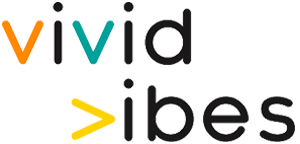#Interview
The Art of Workshopping: A discussion with Jonathan Courtney
By: Dimitris Semsis
As most of you are aware of by now, we at Vivid Vibes consider the acquisition and expansion of knowledge as one of the main principles that drive our business as a whole. Knowledge allows for growth at both a personal and corporate level, and the combination of these two vastly important factors can prove to be substantially beneficial to businesses of all kinds—be it niche operations with single-digit staff, fledgling startups, or bustling mega-corporations with a global reach. Knowledge is the fuel that feeds the engine of progress, and through that, success is bound to follow. With such an information-dense subject-matter in mind, we conducted a very special digital gathering. Not too long ago, we had the opportunity to sit down and have a discussion with our friend, and ideological compatriot, Jonathan.
Jonathan Courtney is the co-founder of AJ & Smart and decided to produce an item that seems to be nearing extinction in today’s age of mass-produced e-learning: a book. In a time where one can access innumerable online courses and classes with the click of a button, a book might appear like an antiquated idea to some. Yet Jonathan insists—and we are inclined to agree with him—that books still offer one of the most effective pathways towards concise learning, stating that some of the best knowledge he has gained himself has been through books. The book in question is aptly named “The Workshopper Playbook”, and it offers a detailed and effective dissection of workshops, and how one can effectively implement and run them. Jonathan was kind enough to share some of this information with us during our online conversation—after we peppered him with our usual barrage of hard-hitting questions, that is.
One of the main issues that pop up when trying to design a workshop is the large variety of ages, backgrounds, and mindsets one is likely to face. When asked to offer a solution to such a potential obstacle, Jonathan insisted on the importance of terminology. Terminology can—and should—be molded to fit and cater to specific individuals and groups. In the same way that a fresh-faced twenty-year-old cannot be expected to respond to the same stimulus that suits a sixty-year-old corporate veteran, different departments require different uses of terminology and teaching methods. A sales team might have greater use for practical problem-solving principles, while designers might respond better to a more creatively inclined structure. Allowing for customization, and subsequent personalization, can make or break a workshop. When you connect the subject-matter directly to the individuals you are trying to teach, your workshops immediately become more immersive. In turn, this leads to a greater amount of net knowledge gained by your audience, enhancing the success potential of your workshops.
Yet, as important as it is to allow for flexibility in your workshop design, mastery of the basics remains essential. Jonathan was quick to point out that mastering the basic structure of workshop formulation allows for the accumulation of confidence, know-how, and skills required to work outside the predetermined path. This is where books such as his come into play, they give you the tools through which you are able to fall into your own style of workshop creation—but only if you first dedicate yourself to wield them with the utmost efficiency. By committing to the basics to the point where they become second nature, you allow for your best self to be present when delivering a workshop. This knowledge-base creates the basis through which you will be able to maneuver around the most resistant of audiences, coaxing them to adopt a more efficient way of thinking. So the message is clear, my friends: stick to the basics, but do not be afraid to experiment after you’ve mastered them.
As the conclusion to the workshop-oriented part of our discussion with Jonathan, we asked him to share three key areas as far as successful workshops are concerned. He began by calling for a clear ending; if a workshop has no clear end-goal in mind, it runs the risk of lacking true substance. This overall clarity of meaning can additionally be supported with a post-workshop comparison—ask for your audience to complete a task in their usual preferred manner, and then ask them to complete a similar objective within half the time through the use of your method. Most are bound to be impressed by the efficiency present in your line of thinking, leading to what Jonathan affectionately called an “aha!” moment—a workshop epiphany if you will. This leads to the third important area: incorporating a Q&A session, tying it all together with the concepts of customization and interactiveness that were previously discussed. Connect with your audience, allow them to voice their thoughts and concerns, and you will be all the more successful for it. As a parting thought, Jonathan warned us against the pitfall that is seeking perfection when preparing for a workshop. Assume the worst—by embracing chaos you will rid yourself of any unnecessary stress and put forth your true best self.
As the true finale to our interview, and in typical Vivid Vibes fashion, we asked Jonathan to address humanity as a whole—while assuming the guise of the infamous COVID-19 virus. His message was to the point: Through this tragedy, we should consider restructuring our value hierarchy in life. By cutting out all the pointless drivel in our daily existence, we can allow for true personal growth.
We parted ways with Jonathan by expressing a shared interest in future collaborations—once the Covid-19 crisis has dissipated. In person design-sprint workshops might as well become a reality. Until then, stay positive, stay safe, and stay Vivid.
Order Jonathan’s book here.
